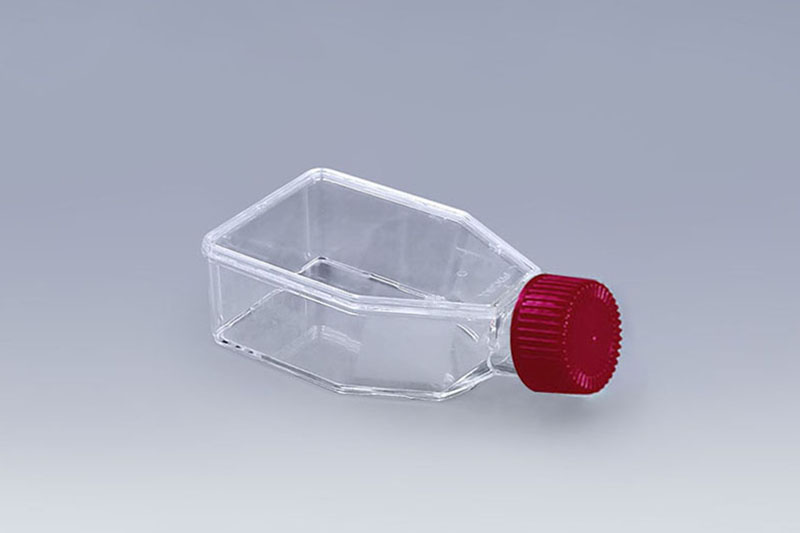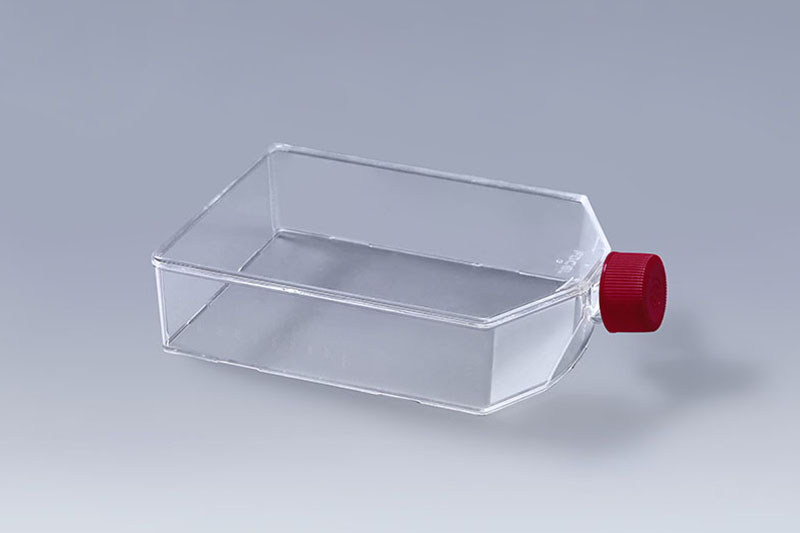Among all cell culture consumables, cell culture flasks are the most widely used category. This is mainly because of its various specifications and convenient operation, which can meet the needs of different scales of cell culture. As a widely used cell culture container, what are its characteristics, and how should we choose it?
First of all, the cell culture bottle is made of polystyrene, which has good transparency, and it is convenient to observe the growth of cells through the bottle body. Secondly, this consumable has TC-treated and non-TC-treated surfaces, which are suitable for the culture of adherent cells and suspension cells, respectively.
Third, the bottle is designed with a wide neck, so there is no dead angle in contact, which facilitates the entry of pipettes and cell scrapers. Fourth, there are ventilation holes at the bottom of the bottle, which is conducive to the rapid entry of gas inside the incubator around the cell bottle, and shortens the recovery time of the cell bottle from the normal temperature environment.
Fifth, there are two types of caps: airtight and airtight. The airtight lid is suitable for cell and tissue culture under sealed conditions, while the airtight lid is suitable for open culture. Affect the sealing and ventilation effect of the breathable membrane.
When choosing a cell culture bottle, we need to figure out the type of cells and the culture environment. Based on these two points, we can determine whether to choose a TC-treated surface or a non-TC-treated surface, and a breathable cover or a sealed cover. Finally, determine the bottle size based on the cell culture scale.
The above are the characteristics of the cell culture flask and the points that should be paid attention to when choosing, have you learned it? Fudau Cell focuses on the R&D, production and sales of high-end biological consumables. Welcome to discuss cooperation.
The FAI climbed 5.9 percent year-on-year in the first 11 months of 2018, quickening from the 5.7-percent growth in Jan-Oct, the National Bureau of Statistics (NBS) said Friday in an online statement.
The key indicator of investment, dubbed a major growth driver, hit the bottom in August and has since started to rebound steadily.
In the face of emerging economic challenges home and abroad, China has stepped up efforts to stabilize investment, in particular rolling out measures to motivate private investors and channel funds into infrastructure.
Friday's data showed private investment, accounting for more than 60 percent of the total FAI, expanded by a brisk 8.7 percent.
NBS spokesperson Mao Shengyong said funds into weak economic links registered rapid increases as investment in environmental protection and agriculture jumped 42 percent and 12.5 percent respectively, much faster than the average.
In breakdown, investment in high-tech and equipment manufacturing remained vigorous with 16.1-percent and 11.6-percent increases respectively in the first 11 months. Infrastructure investment gained 3.7 percent, staying flat. Investment in property development rose 9.7 percent, also unchanged.
 English
English



















































 T25 Flask
T25 Flask T225 Flask
T225 Flask